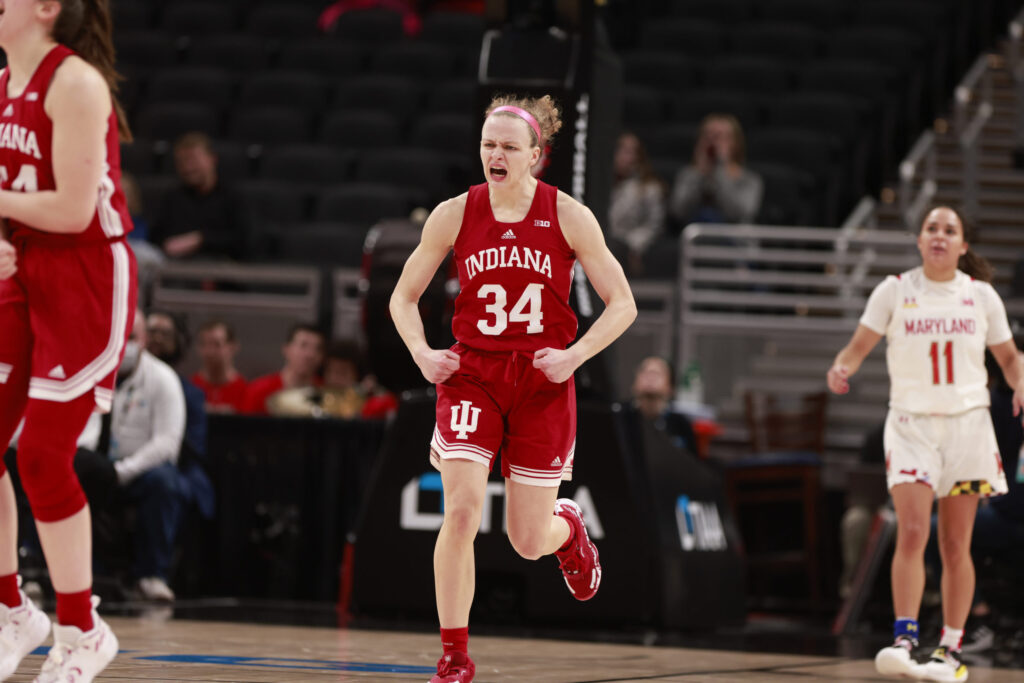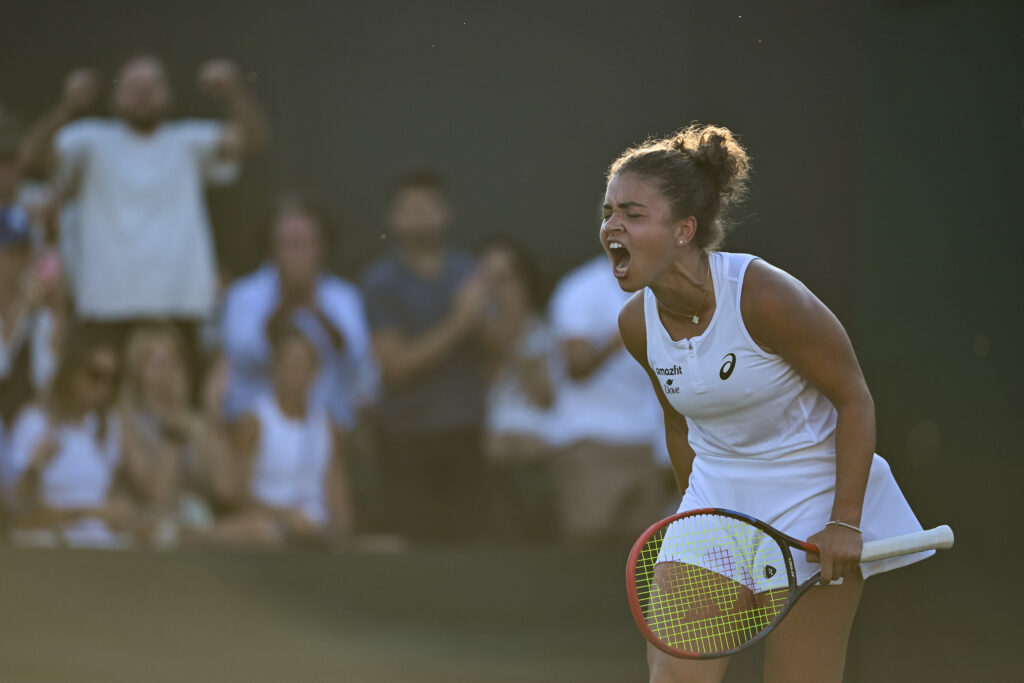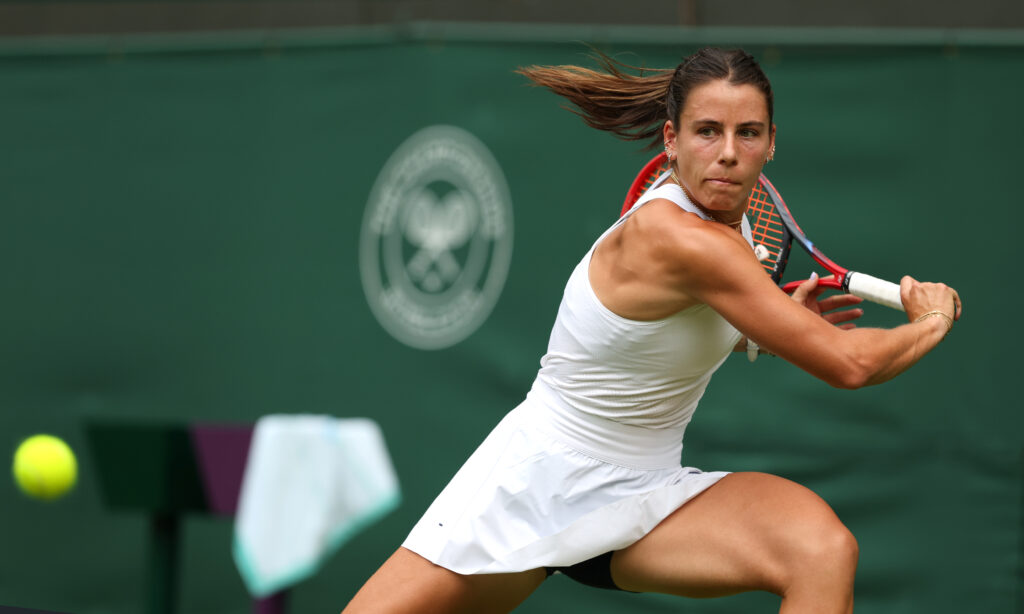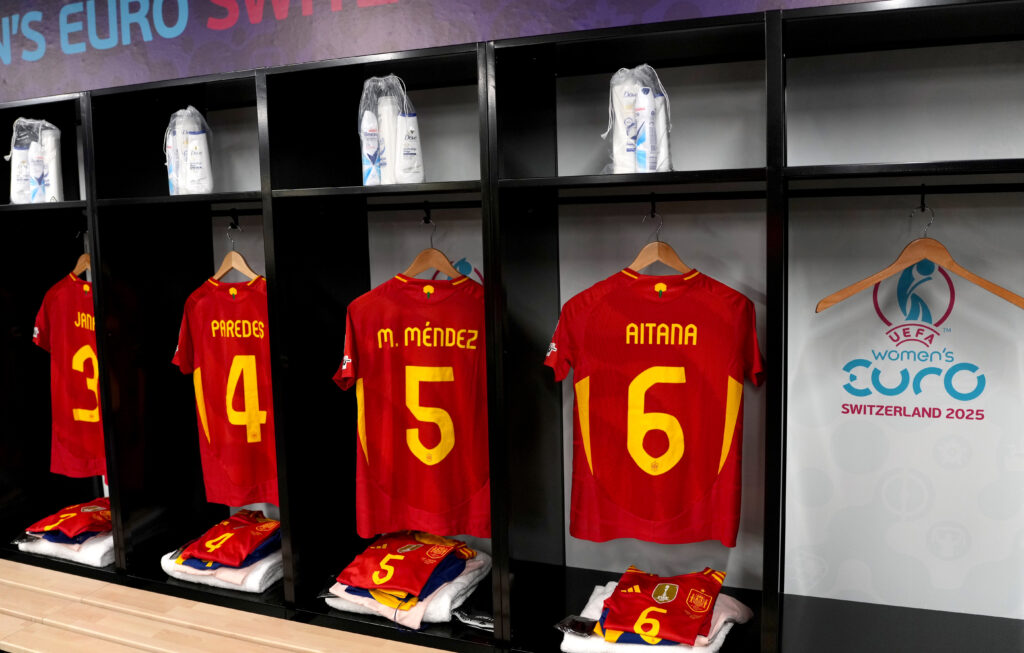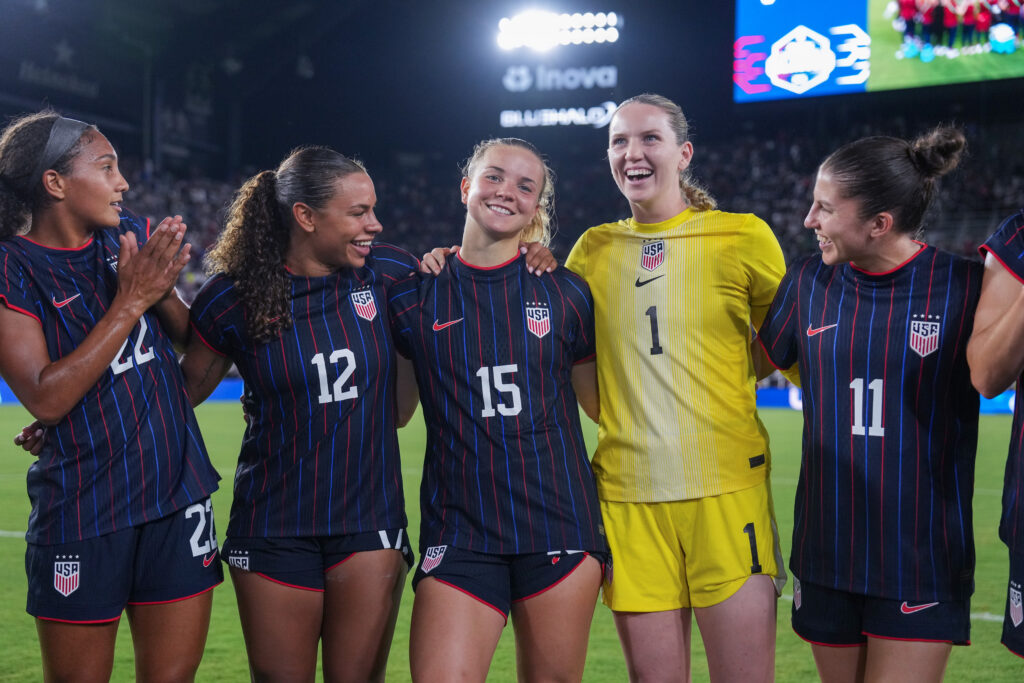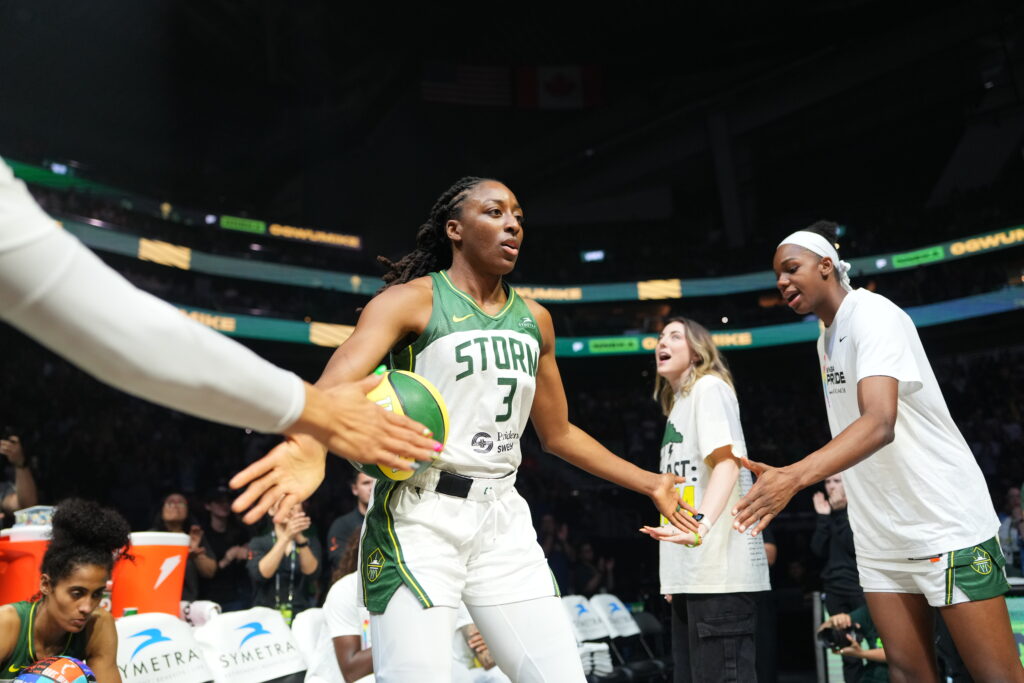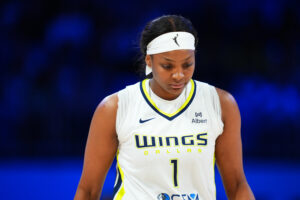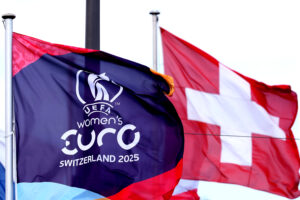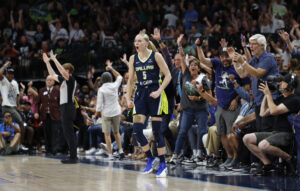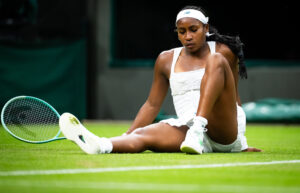Indiana and basketball have been intertwined from the beginning. James Naismith, the man who created the sport, even famously said: “While the game was invented in Massachusetts, basketball really had its origin in Indiana, which remains the center of the sport.”
Boys and girls alike from Indiana grow up with basketball in their blood.
“I don’t know anyone who didn’t play basketball,” said current Indiana player Grace Waggoner.
But as men’s basketball at Indiana rose to national prominence, first with Branch McCracken and then with Bob Knight, the women’s program remained in the shadows during the NCAA era, barring one incredible season in 1983.
It wasn’t for a lack of interest from young girls across the state. Amy Metheny, IU’s point guard in ‘83, grew up wanting to play for Knight, but would have settled for anyone if it meant a chance to be a Hoosier. Current women’s coach and former Purdue player Teri Moren had her room painted red and white growing up.
And yet for 38 years, the program was dormant.
Then in 2021, the IU women made it to the Elite Eight for the first time. Suddenly, Indiana women’s basketball was alive again.
1983
In 1975-76, three years before Melissa Leckie set foot on Indiana’s campus, the Hoosiers men’s basketball team made history, going 32-0 and defeating Michigan for the national title.
Leckie watched the championship game at her home in Saginaw, Mich. Her parents and grandfather all went to Michigan, so when they turned on the game, the predominant rooting interest was clear. But as mom, dad and grandpa yelled for the Wolverines, Leckie quietly cheered for the Hoosiers.
“I had always been a U of M fan,” she said. “But when Indiana and Bobby Knight were playing Johnny Orr and Michigan, inside I was rooting for Indiana, and I have no idea why.”
In 1979, when the high school senior visited the campus in Bloomington, she understood. Leckie was destined to be a Hoosier.
So was her future teammate, Amy Metheny. These days, you can see Metheny’s face in the Indiana Basketball Hall of Fame, celebrating her time at Southport High School in Indianapolis. But back then, she was fighting for a spot on IU’s roster.
Metheny was 5-foot-6, and IU at the time was only interested in recruiting taller players. When she realized Old Dominion, her other choice of school, was too far away for her parents to be able to see her play, she decided to walk on at Indiana.
At first, it did not go as planned. In her freshman year, Metheny made it to the final cuts, got strep throat, and did not make the squad. The next year, an injury got in the way.
“Long story short, it was a long journey,” Metheny said.
Metheny was relentless in her pursuit of being the Hoosiers’ point guard — think the movie “Rudy,” but with a protagonist who’s an actual talent.
“I was determined,” she said. “I went into the coaches’ office and said, ‘What do I need to do?’ I’m sure she was wondering, like, ‘Why are you still around?'”

But Metheny’s determination paid off, and in 1983 when the team won the Big Ten regular season title, she led the league in assists.
Players like Rachelle Bostic, who ranks seventh on IU’s all-time scoring list (1,827 points), contributed to that milestone. Bostic, like Leckie, hails from Michigan. The No. 3-ranked prospect in the state, she was a highly touted recruit behind Paula and Pamela McGee — “I always said I should be No. 2 because they’re twins,” Bostic joked about the duo, who were in fact a package deal.
The three of them talked on the phone often about where they wanted to play college ball. Eventually, the McGees decided on USC, but that was too far from home for Bostic.
She toured Indiana and met another prospective player, Denise Jackson, who was visiting from Florida. They were both intrigued by the program, but the selling point came from the men’s coach. Knight was already a basketball legend, so when he talked to them about coming to IU, it didn’t take much convincing.
“He said, ‘If you guys are half as good as they say you are, you can bring a lot to this program,’” Bostic said.
They were, and they did.
The 1983 season was historic for the Hoosiers, one the players still talk about today. Every year, the accomplishment becomes more and more magnificent in their personal lore.
“By the time we get to our 50th anniversary, we will have won the 1983 national title,” Leckie said with a laugh. “It will just be created amongst all of us.”
In reality, the team won the Big Ten and made it to the second round of the NCAA Tournament — a feat they’ve since only accomplished two other times (2016 and 2021). But to start the season, the Hoosiers weren’t exactly world-beaters.
After three straight losses to begin the season, they went 3-6 in non-conference play and opened their Big Ten schedule with a 16-point loss to Ohio State.
By that point, the players had seen enough.
“We just got together and said, ‘We are going to do something. This is the year to do it,’” Bostic said. “And we just started winning.”

IU went 15-2 the rest of the way, topping Ohio State 62-56 to end the year. To the players, the magical run was the start of something at IU. But in the years that followed, a confusing string of coaching hires, losing seasons, and, at times, misguided recruiting kept Indiana from winning a second Big Ten regular season title.
Players like Leckie, Metheny and Bostic looked at their beloved program and thought, “What is going on?”
“It was disappointing because we worked so hard to get it to that level,” Bostic said. “And you would hope anything after would maintain that, not let it drop below that.”
When Bostic graduated, she had no idea that Indiana basketball would falter. And she also didn’t know that she’d already met the woman who would build it back up again.
She just wasn’t a woman quite yet. Back then, she was in her early teens, attending camps at IU with Bostic as her camp counselor. Bostic remembers her work ethic and determination. “She didn’t let anything stop her,” she said.
That girl, of course, was Teri Moren.
The in-between years
Maryalyce Jeremiah, the coach of the ‘83 team, stayed on for two more seasons before leaving for a job at Cal State Fullerton. The Hoosiers worked their way through six coaches, who went a combined 438-424, before hiring Moren in 2014.
During the late ‘80s and ‘90s, women’s basketball went through a period of massive growth. Programs like Tennessee, UConn and even fellow Indiana institution Notre Dame were laying the groundwork to become powerhouses in the game.
During that process, the Hoosiers fell behind. And once they did, it took decades for them to return.
Just a year after the Big Ten title season, Nancy Eksten (then Cowan) graduated from Crown Point High School. She was the runner-up for Indiana’s Miss Basketball Award, a high school All-American and a longtime IU fan.
Eksten was the seventh of eight kids in her family, and all of them went to Indiana. But when her time came, the Hoosiers didn’t pick up the phone to recruit her, so Eksten ended up at Kentucky. It was close to home and a nationally ranked program at the time.
Eksten had success as a Wildcat — even scoring her first basket against the team that jilted her — but Kentucky was no IU. So, when Jeremiah left after Eksten’s freshman year, and Indiana’s new coaching staff showed interest in her, she transferred without a second thought.
It’s hard to find anyone who is more proud of being a Hoosier than Eksten, but her time at Indiana wasn’t easy. You couldn’t blame Eksten, or the many others in those forgotten years if they wondered, What if? What could have happened for them at IU if the situation had been just a little bit different?
“I tell you,” she says, “I would love to be playing right now. I’d love it.”

Jorja Hoehn headed up the program during Eksten’s first year at Indiana. Hoehn had success at Division II Central Missouri before taking the job at Indiana. Transitioning between the levels was a challenge, and Hoehn didn’t endear herself to her players.
Cindy Bumgarner was recruited by Jeremiah and played under her to start her college career. Those days, she recalls, were nothing short of a dream. But when Hoehn came in, things started out poorly — “We didn’t trust her,” Bumgarner said — and got much, much worse.
“She didn’t respect us as people,” Bumgarner said. “She told us a lot about how terrible we were. It became a thing for her that somehow her inability to connect with us or get to know us in a meaningful way suddenly became all about us being bad people. And because we didn’t practice the religion she practiced, we were going to hell.”
When Bumgarner’s playing days at IU ended and she walked off the court for the last time, she felt relieved. After everything she’d been through, she still loved the school, but basketball was no longer fun. Even worse, her self-esteem plummeted.
Bumgarner never wanted anyone to go through what she did, so when Indiana parted ways with Hoehn, she was hopeful that whoever came next would be an improvement.
She was wrong.
“Sometimes I wonder who had it worse,” she says, comparing Hoehn and Jim Izard, who took over in 1988.
Rumors about Izard swirled during his time at Indiana — stories that he was inappropriate with his players, and that he had a habit of dating them.
Three months into her senior year, when Bumgarner was no longer playing basketball but finishing her degree, Izard showed up at her door. He was there to pick up her roommate, also a former player and current college student, for a date.
“I knew right then he was going to be a problem,” Bumgarner said.
These days, Bumgarner is able to sift through the bad memories of her days at IU and pick out the things that made her happy. She loves the school, and she’s proud of the woman she became through the difficult circumstances.
“The hard things in life make you grow in ways you didn’t know you needed,” she said.
Still, it took Bumgarner 18 years before she was able to set foot on campus again. She needed time to heal. And however strange it might seem, the thing that helped remedy those wounds was the same thing that caused them — Indiana basketball.

Teri Moren takes over
Amanda Cahill remembers vividly the day Teri Moren came into her life.
Cahill, recruited to Indiana by coach Curt Miller, went through her summer workouts with Miller, but by the time she returned to campus to start her freshman season in 2014, IU had a new coach.
She was nervous. Starting college is hard enough, but Cahill chose Indiana under different circumstances, and in a few short months, she was starting over once again. Some players transferred, but as soon as she met Moren, Cahill felt at ease. The new coach gave her a hug and was keen to help Cahill and her teammates settle in at IU.
Besides, everything Cahill loved about Indiana was the same.
“I really believed in Indiana’s future,” said Cahill, who now plays professionally in Luxembourg. “It’s a basketball state. It’s set up for success.”
Not everyone shared her confidence.
When Moren was hired, Metheny remembers hearing concerns that she might not be in it for the long haul. Moren, meanwhile, told the IndyStar in 2014 that IU was the kind of place she could see herself coaching at until she retired. Moren graduated as a Boilermaker, but she was born a Hoosier. Growing up in Seymour, Ind., Moren and her family regularly tuned into Indiana games and were avid consumers of “The Bob Knight Show.” Even her childhood bedroom, painted red and white, reflected her fandom.
Those who really knew Moren were thrilled with the hire.
When Moren became the head coach, one of the first things she did was reach out to former players and let them know they were welcome and wanted.
In the fall, Indiana celebrated 50 years of women’s basketball by inviting all alumni to campus for a special event.
“Some people hadn’t been back at all, and they treated us like family,” Eksten said. “We were just beat up, and to bring us back the way they did and to make it such a positive experience was amazing. We loved it.”
By 2014, Moren had built a solid coaching resume. After recording six winning seasons in her seven years at Division II Indianapolis, Moren spent four years at Indiana State. In her first season, the Sycamores went 16-16 and finished sixth in the Missouri Valley Conference. In her last year, they went 20-12, won the conference and made it to the NIT Tournament.
In Moren’s first season at Indiana, the Hoosiers struggled, going 4-14 in the Big Ten. But during that difficult first season, Cahill and her teammates walked into Simon Skjodt Assembly Hall one day, looked up to the very top of the stands — the kind of seats you’d refer to as the “nosebleeds” — and set a goal.
“We said, ‘We really want to fill this up. We want to have people up at the top,’” Cahill said.

It worked. In Moren’s second season, the Hoosiers made it to the second round of the NCAA Tournament. That tied a record for the program’s deepest postseason run in the NCAA era, set by the 1983 team.
IU has always had a pretty strong following for women’s basketball. In 1997, a group called the SUPERFANS made it their mission to support the team. Group member Chris Schneberger told the Indiana Daily Student in February 1997: “I think yes, I am obsessed.”
“The people who follow women’s basketball are incredibly loyal,” Metheny said. “They love their team.”
That love for the team had a trickle-down effect.
About an hour down Interstate 54 sits the town of Linton. The girls’ basketball team at Linton-Stockton high school, in the town of 5,244, won back-to-back state championships in 2020 and 2021.
Coach Jared Rehmel grew up immersed in the world of Indiana basketball, but in his town, girls’ basketball didn’t have the same backing, and he found that girls didn’t have much interest in playing. He and his staff worked hard to cultivate a culture in Linton, and they got an assist from the college team up the road.
“With the success of the women’s program (at IU), we can probably credit a lot of that with our girls wanting to spend time in the gym, wanting to get better,” he said. “Watching them play and having the success they’ve had made our girls want to have success, too.”
Led by IU’s all-time leading scorer Tyra Buss, a role model for Rehmel’s players, the Hoosiers followed up their successful 2016 season by winning the NIT two years later.
During the game at Assembly Hall, Cahill’s freshman year dream became a reality. They were so high up that she couldn’t see their faces, but Cahill felt their support. The Hoosiers had fans all the way at the top of the stands.
“I remember kind of sitting there, taking it all in,” she said. “It was just really special to see how far we had come, and the support we had.”
As for the coach at the helm, Rehmel speaks for the community at large.
“We hope like heck she doesn’t leave,” he said with a laugh. “People absolutely love her.”

2021 Elite Eight run
Ali Patberg has always loved basketball, to the point of obsession. She had her favorite teams and players — the Pacers, Reggie Miller and Allen Iverson — but she would consume any kind of basketball she could. On the radio in the car, on TV at home, in the gym where her dad coached. It didn’t matter.
Today, Patberg is the face of IU women’s basketball. She loves being a Hoosier so much that it’s hard to imagine her being anywhere else, but the seven-year player (COVID-19, a transfer and injuries gave her extra eligibility) actually started her college career at Notre Dame, the preeminent Indiana women’s program at the time.
By the time she transferred to IU, the Hoosiers were building. They’d made it to the second round of the NCAA Tournament in 2016, and Patberg was redshirting on the roster due to transfer rules when they won the NIT in 2018.
But Moren wanted to do more. That’s what she told Grace Berger when she went to her house in Kentucky on a recruiting trip.
“She was so adamant that we had all the tools to be one of the best teams in the country,” Berger said. “And that’s what really excited me as a recruit.”
It’s what Moren had been reaching for since she took over in 2014, and what the ‘83 team had been dreaming about since their historic season. Last year, the country finally saw what Indiana had been working toward.
The Hoosiers came into the tournament as a No. 4 seed. They beat VCU in the first round, and then Belmont in the second to reach the program’s first Sweet 16. They followed that up with a 73-70 upset of No. 1 seed NC State to advance to their first Elite Eight.
In Luxembourg, Cahill got up in the middle of the night to watch those games.
Bumgarner was watching too, at her home in California. So was Eksten, in Indiana. Everywhere, players from the ‘83 team tuned in, firing off hundreds of messages in their group text.
“It’s invigorating for us,” Leckie said. “We feel young again. We want to be out on that court, and it makes us remember our playing days.”
“We’ve been waiting for this day,” Metheny said.

For the current players, it’s hard to stop and reflect on everything they’ve done for the program when, according to Berger, they haven’t accomplished their ultimate goal — adding a women’s basketball banner to the five from the men’s side that hang in Assembly Hall.
And though they don’t dwell on it for long, there’s an understanding that history is being written.
“It’s kind of surreal,” Berger said. “It’s one thing to talk about it as a crew, but to be here for teams that are actually the first to do something in Indiana’s program, that’s really special. It means a lot.”
It’s special for everyone who considers themselves a Hoosier, past or present.
Bostic remembers running sprints during one of her first practices as a freshman at IU. Eager to impress her coach, Bostic ran as hard as she could, beating everyone up the court. Since that day, however tired she was and however fast her teammates were, Jeremiah expected Bostic to finish first in every sprint.
Her teammates knew, too. And sometimes, she says, when she was extra fatigued, they would hold back a little bit so she could still finish first.
It was that level of understanding of one another that helped the ‘83 team achieve greatness, and it’s the same sort of interpersonal awareness today’s IU group brings to the court.
“They are just a really special team,” Bumgarner said. “It’s pretty obvious. It’s not just that they’re winning, but the way they work together, the way they keep fighting.”
It’s senior day at Assembly Hall in February. The lights dim, fans hold up their iPhone flashlights, and Indiana’s intro video plays on the Jumbotron. Patberg, Alexa Gulbe and Waggoner look up to see their faces on the big screen for the last time in the regular season. It’s the perfect scene for a senior celebration.
But Iowa controls the game from the jump. And before long, the Hawkeyes have opened up a double-digit lead. Then, Patberg hits a 3. Then, she drives to the hoop, draws a foul and finishes, cutting the lead down to 28-16. Patberg screams with elation, and chest-bumps a teammate so hard she falls over. One play later, she draws another and-1. This time, Patberg manages to stay on her feet. She walks toward the bleachers, throws her hands in the air and motions for the crowd to get louder. They oblige.
And as the decibels increase, you can feel it. What it means. For a split second, the importance, the love, the passion of IU women’s basketball overtakes the gym, like an overwhelming wave of understanding. Even though IU spends most of the game down by 10 points or more, a win still seems possible. It’s why, when Berger gets a three-point play of her own in the third, with Iowa now leading by 19 points, Bostic rises to her feet. She screams, “Let’s go!” Her WNBA orange hoodie stands out in a sea of candy apple red and snowy white.
It’s why the stands remain full until the bitter end. And why, with two minutes to go, Indiana is suddenly down by just 10. With 12 seconds left, four. It’s why, even when the buzzer sounds and Iowa wins 96-91, the feeling hangs in the air. Because when it comes to women’s basketball at Indiana, anything is possible.
It wasn’t always. But it is now.
Eden Laase is a contributing writer at Just Women’s Sports. She previously ran her own high school sports website in Michigan after covering college hockey and interning at Sports Illustrated. Follow her on Twitter @eden_laase.
